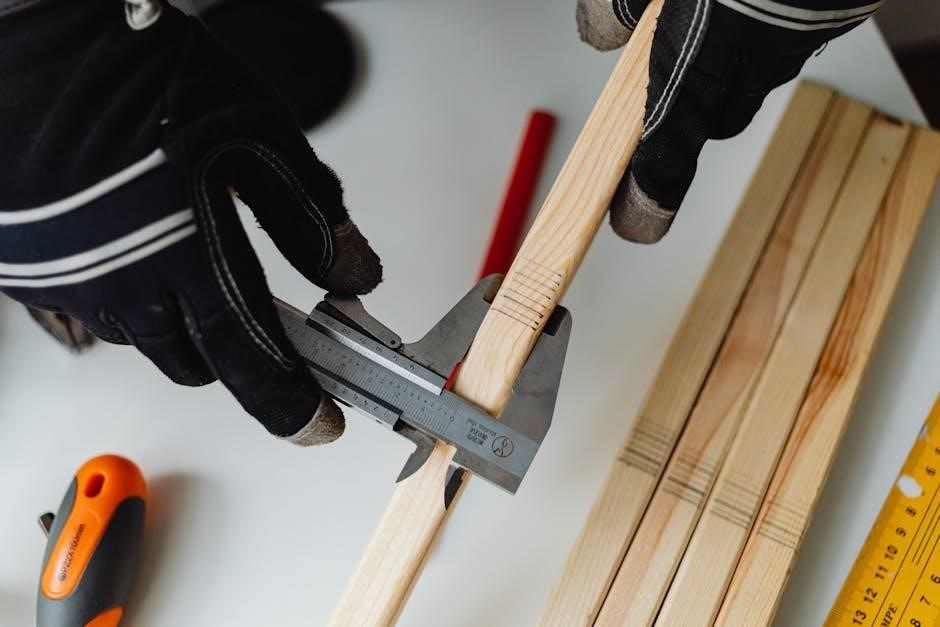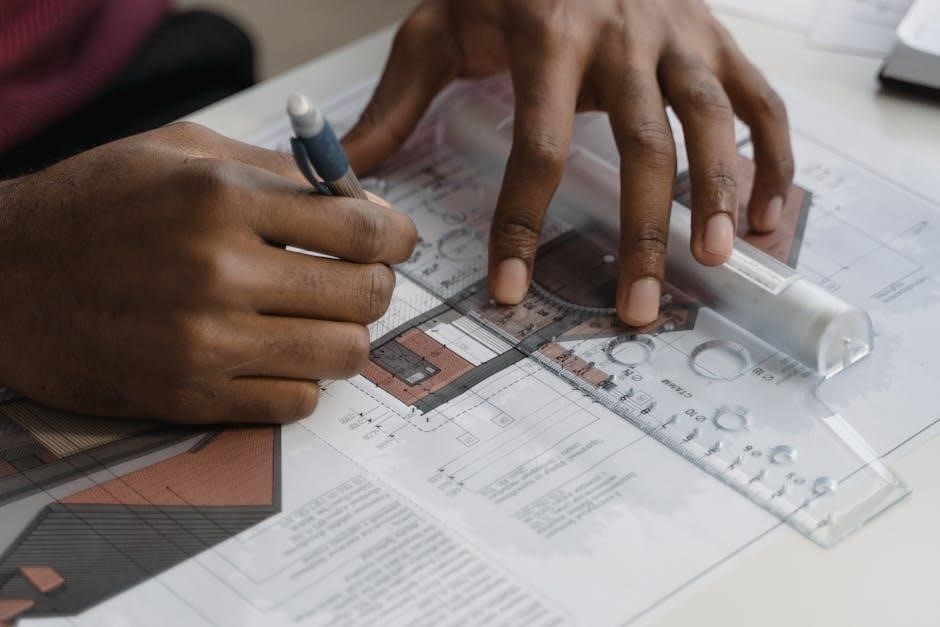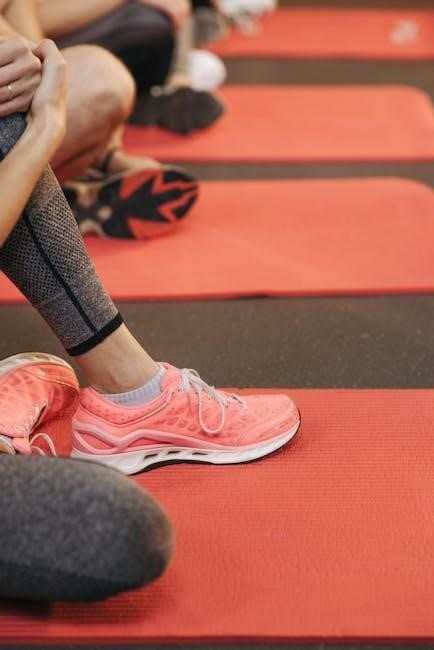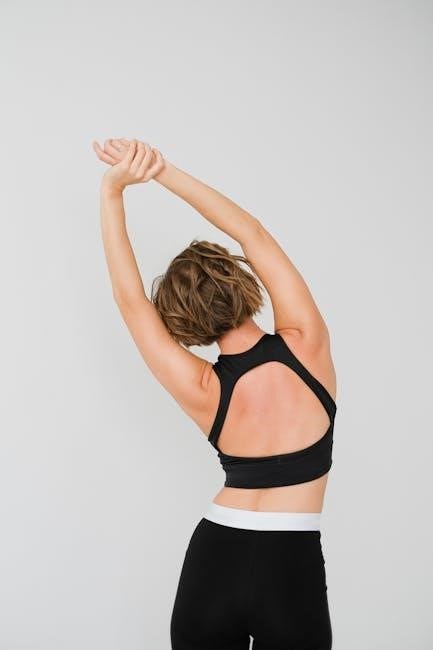Welcome to the Braun Series 7 Manual‚ your comprehensive guide to unlocking the full potential of your electric shaver. This manual covers features‚ usage‚ maintenance‚ and troubleshooting‚ ensuring you achieve the perfect shave every time.
1.1 Importance of the Manual
The Braun Series 7 manual is essential for understanding your electric shaver’s features‚ proper usage‚ and maintenance. It provides detailed guidance on safety precautions‚ electrical safety‚ and handling tips to ensure optimal performance. The manual also covers troubleshooting common issues‚ helping you address problems like poor shaving performance or battery issues. By following the manual‚ you can extend the lifespan of your shaver and enjoy a superior shaving experience.
1.2 What the Manual Covers
This manual provides a detailed overview of the Braun Series 7 shaver‚ including its features‚ safe usage guidelines‚ and maintenance tips. It covers topics such as shaving technology‚ adjustable modes‚ battery care‚ and wet/dry shaving capabilities. Additionally‚ it offers troubleshooting solutions for common issues like poor performance or battery problems. The guide also includes information on accessories‚ spare parts‚ and where to find support. By following this manual‚ you can maximize your shaver’s performance and extend its lifespan effectively.

Safety Precautions
This section outlines essential safety guidelines for using your Braun Series 7 shaver‚ including proper handling‚ electrical precautions‚ and usage recommendations to ensure safe operation.
2.1 General Safety Guidelines
Always follow these guidelines to ensure safe and effective use of your Braun Series 7 shaver. Use the appliance only for its intended purpose and keep it out of reach of children; Avoid exposure to water or extreme temperatures. Regularly inspect the device for damage and ensure all parts are securely attached before use. Never attempt to modify the shaver or use damaged accessories‚ as this may pose a safety risk. Proper handling and adherence to these guidelines will help prevent accidents and maintain optimal performance.
2.2 Electrical Safety Tips
Always use the Braun Series 7 shaver with the provided cord and avoid exposing it to water or moisture. Never use the device near water sources or while bathing. Ensure the shaver is stored in a dry place‚ away from direct sunlight. Avoid overloading electrical outlets and never attempt to modify the appliance. Keep the cord away from hot surfaces and avoid using damaged or frayed cables. Adhering to these electrical safety tips will ensure safe and reliable operation of your Braun Series 7 shaver.
2.3 Handling Precautions
Handle the Braun Series 7 shaver with care to ensure optimal performance and longevity. Always use the original Braun accessories to maintain safety and functionality. Avoid exposing the device to extreme temperatures or dropping it‚ as this may damage internal components. Clean the shaver regularly using a soft cloth and avoid harsh chemicals. Store the device in a dry place‚ away from direct sunlight. Handle the blades and foils with caution‚ as they are sharp and may cause injury. Proper handling ensures your Braun Series 7 remains in excellent condition for years.

Product Overview
The Braun Series 7 shaver is designed for men seeking a premium shaving experience. It offers advanced shaving technology‚ an ergonomic design‚ and versatile features for both wet and dry shaving‚ ensuring a comfortable and efficient grooming routine.
3.1 Braun Series 7 Models
The Braun Series 7 lineup includes various models such as the 720s-7‚ 765cc-7‚ 7893S‚ and 5764‚ each offering unique features tailored to different shaving preferences. These models are designed to provide a premium shaving experience with advanced technologies like IntelliFlex and ProLift. They cater to both wet and dry shaving needs‚ ensuring versatility and comfort. Whether you prioritize cordless convenience or advanced cleaning systems‚ the Braun Series 7 models are crafted to meet diverse grooming requirements with precision and efficiency.
3.2 Design and Build Quality
The Braun Series 7 shavers are crafted with premium materials‚ combining high-quality plastics and metals for durability and a sleek appearance. The ergonomic design ensures a comfortable grip‚ reducing fatigue during use. The shavers are IPX7-rated‚ making them fully washable and resistant to water ingress. The build quality is robust‚ with precise engineering evident in the foil and cutter cassette. Additionally‚ the LED display provides clear feedback on battery life and maintenance needs‚ enhancing user experience. This blend of form and function ensures long-term reliability and performance.
3.3 Key Features Overview
The Braun Series 7 shavers feature advanced technologies for a superior shaving experience. Highlights include intelligent Sonic Technology‚ which adapts to beard density‚ and five adjustable shaving modes for personalized results. The shavers are equipped with a long-lasting Li-ion battery‚ supporting up to 50 minutes of cordless use and rapid charging. Wet and dry shaving capability allows for use with or without water or shaving cream. Additional features include an LED display for battery status‚ a travel lock‚ and a flexible shaving head that adjusts in eight directions for optimal comfort and precision.

Features of Braun Series 7
The Braun Series 7 offers advanced shaving technology‚ adjustable modes‚ a long-lasting battery‚ and wet/dry capability for a personalized and efficient shaving experience designed for comfort and precision.
4.1 Shaving Technology
The Braun Series 7 features advanced shaving technology‚ including Pulsonic Technology‚ which delivers 10‚000 micro vibrations for efficient hair capture. The shaver includes three shaving elements: a middle trimmer for long hairs and two OptiFoils for close shaving. The adaptive head adjusts to facial contours‚ ensuring a comfortable and precise shave. This technology minimizes skin irritation and maximizes performance‚ making it suitable for various beard types and skin sensitivities. The design ensures optimal cutting efficiency‚ providing a smooth and clean shaving experience every time.
4.2 Adjustable Shaving Modes
The Braun Series 7 offers multiple adjustable shaving modes to cater to different beard types and skin sensitivities. With three to five adjustable speed settings‚ users can customize their shaving experience. The sensitive mode is designed for gentle shaving‚ while the turbo mode provides extra power for denser hair. These modes ensure optimal performance and comfort‚ allowing users to adapt the shaver to their specific needs. This feature enhances the overall shaving experience‚ providing precision and comfort for all skin types.
4.3 Battery and Charging
The Braun Series 7 features a high-performance battery that ensures extended use on a single charge. It typically offers up to 50 minutes of cordless shaving. The shaver also includes a quick-charge function‚ providing enough power for one shave in just 5 minutes. An LED indicator displays the battery status‚ alerting you when it needs recharging. The charging base is convenient for daily use‚ and the device is compatible with travel chargers for added portability. This advanced battery system ensures reliable performance and flexibility for your grooming needs.
4.4 Wet and Dry Shaving Capability
The Braun Series 7 is designed for both wet and dry shaving‚ offering versatility and convenience. It is fully washable under water‚ allowing you to shave in the shower for added comfort. Wet shaving mode ensures a smooth experience with shaving cream or gel‚ while dry mode provides quick and efficient shaving. The shaver’s advanced design includes a specialized wet shaving feature‚ optimizing performance with shaving aids. Its ergonomic design ensures a secure grip‚ even when wet‚ making it ideal for all grooming needs. The built-in trimmer further enhances versatility for precise beard styling.
Using the Braun Series 7
The Braun Series 7 offers a seamless shaving experience with intuitive controls and versatile modes‚ ensuring a comfortable and efficient shave tailored to your preferences.
5.1 Before First Use
Before using your Braun Series 7 for the first time‚ charge it fully to ensure optimal performance. Clean the shaver head and trimmer with a dry cloth to remove any packaging residue. Familiarize yourself with the controls and modes to customize your shaving experience. For wet shaving‚ ensure the device is fully charged and prepared for use with water or shaving cream. Always follow safety guidelines and avoid submerging the shaver in water unless specified. Proper preparation ensures a smooth and efficient first shave.
5.2 Daily Shaving Routine
Start your daily shaving routine by ensuring the Braun Series 7 is fully charged. For dry shaving‚ simply turn it on and glide smoothly over your skin. For wet shaving‚ apply shaving cream or gel for extra comfort. Use the adjustable modes to suit your beard type‚ and utilize the trimmer for detailing. Rinse the shaver under running water if using wet mode. After shaving‚ clean the device and store it in a dry place or on the charging stand. Regular use helps maintain optimal performance and hygiene.
5.3 Using the Trimmer
Before using the Braun Series 7 trimmer‚ ensure it is clean and free of debris. For precise results‚ trim your beard to the desired length using the adjustable settings. Hold the trimmer at a slight angle and move it gently in the direction of hair growth to avoid irritation. After use‚ rinse the trimmer under warm water and allow it to dry. Regular maintenance‚ like cleaning and oiling‚ will extend the life of your trimmer and ensure optimal performance.
5.4 Charging the Device
To charge your Braun Series 7‚ place it on the provided charging stand‚ ensuring the metal contacts align. Plug the stand into a power outlet using the supplied charger. The LED indicator will turn red during charging and green when fully charged‚ typically within an hour. Avoid overcharging to maintain battery health. The shaver supports dual-voltage charging‚ making it convenient for travel. Always use the original charger to ensure safety and optimal performance.

Maintenance and Cleaning
Regular maintenance ensures optimal performance and longevity. Clean the shaver after each use‚ store it properly‚ and replace worn parts to maintain efficiency and hygiene.
6.1 Cleaning the Shaver
Regular cleaning is essential for maintaining your Braun Series 7 shaver’s performance. Use the provided cleaning cartridge or rinse the shaver under running water for wet models. For dry models‚ gently brush off hair clippings with the included cleaning brush. Avoid harsh chemicals and ensure the shaver is dry before storage. Cleaning stations‚ like the 720s-7 model’s rinse station‚ simplify maintenance. Always refer to the manual for specific cleaning instructions tailored to your model to ensure longevity and hygiene.
6.2 Replacing Parts
Regular replacement of worn parts ensures optimal performance. The shaving cassette‚ typically replaced every 18 months‚ can be ordered from Braun’s official website or authorized retailers. To replace‚ turn the shaver upside down‚ release the cassette latch‚ and insert the new one. For trimmers‚ align the replacement blade and snap it into place. Always use genuine Braun parts to maintain quality and warranty. Refer to your manual for specific model instructions‚ ensuring a seamless replacement process to keep your shaver functioning at its best.
6.3 Storage Tips
Proper storage is essential to maintain your Braun Series 7 shaver’s performance. Store the device in a cool‚ dry place‚ away from direct sunlight and moisture. Use the provided travel case to protect the shaver and its accessories during travel. Clean the shaver thoroughly before storing it for extended periods to prevent dust buildup. Avoid storing it in extreme temperatures or humid environments‚ as this may damage the battery or electrical components. Keep the shaver out of reach of children and pets for safety. Regularly check stored accessories for wear and tear before reuse.

Troubleshooting Common Issues
Troubleshooting Common Issues guides you in identifying and resolving problems like the shaver not turning on‚ poor shaving performance‚ or battery drainage‚ ensuring optimal functionality.
7.1 Shaver Not Turning On
If your Braun Series 7 shaver fails to turn on‚ first check the battery level. Ensure the device is fully charged using the provided charging stand. If the battery is drained‚ charge it for at least 30 minutes. Verify that the power button is functioning correctly and not obstructed by debris. Clean the shaver head and internal components to remove any blockages. Additionally‚ inspect the electrical connections and ensure the charging dock is working properly. If issues persist‚ perform a factory reset or consult the user manual for further guidance.
7.2 Poor Shaving Performance
If your Braun Series 7 shaver is not performing well‚ check for dull blades or clogged shaving heads. Clean the shaver thoroughly and ensure the blades are free from debris. Replace worn-out cutter cassettes with genuine Braun parts for optimal performance. Adjust your shaving technique‚ shaving in the direction of hair growth. Use the correct shaving mode for your beard type. If issues persist‚ reset the shaver or refer to the troubleshooting section in the manual for further assistance.
7.3 Battery Issues
If your Braun Series 7 shaver has battery issues‚ ensure the charger is properly connected and the power source is functioning. Avoid using a damaged cable or adapter‚ as this can disrupt charging. Overcharging may cause performance problems‚ so unplug the shaver once fully charged. If the battery life is short‚ reset the shaver by pressing and holding the power button for 10 seconds. If issues persist‚ update the shaver’s software or contact Braun customer support for assistance. Always use genuine Braun chargers for optimal performance.

Accessories and Spare Parts
Braun Series 7 shavers come with various accessories‚ including replacement heads‚ cleaning cartridges‚ and travel chargers. These can be purchased from authorized retailers or Braun’s official website.
8.1 Available Accessories
Braun Series 7 shavers offer a range of accessories to enhance your grooming experience. These include replacement shaver heads like the Prosonic cassette 70s and 73s‚ designed for optimal performance. Cleaning cartridges are available for use with Braun’s cleaning centers‚ ensuring hygienic maintenance. Additionally‚ trimmers for detailing and shaping facial hair can be purchased separately. Travel chargers and storage cases are also available‚ providing convenience for on-the-go use. All accessories are designed to maintain peak performance and extend the life of your shaver. They can be found at authorized retailers or Braun’s official website.
8.2 Replacement Parts
Welcome to the Braun Series 7 Manual‚ your essential guide to understanding and utilizing your Braun Series 7 electric shaver. This manual is designed to provide you with comprehensive information on how to operate‚ maintain‚ and troubleshoot your shaver. Whether you’re looking to achieve a smooth shave‚ understand the various features‚ or resolve common issues‚ this manual serves as your go-to resource. By following the guidelines and tips outlined in this manual‚ you’ll be able to maximize the performance and longevity of your Braun Series 7 shaver‚ ensuring a superior grooming experience every time.
8.4 Where to Buy
Braun Series 7 replacement parts and accessories are widely available through various channels. You can purchase them directly from the official Braun website or authorized retailers like Amazon‚ Best Buy‚ or Walmart. Additionally‚ they are available at electronics stores and specialty grooming shops. Ensure authenticity by buying from reputable sources. For convenience‚ check availability at local retailers or online marketplaces before making a purchase. This ensures you can maintain and upgrade your Braun Series 7 shaver with genuine parts‚ supporting optimal performance and longevity.

Downloading the Manual
The Braun Series 7 manual can be downloaded from Braun’s official website or third-party sources like ManualsLib. It’s available in PDF format‚ covering features‚ maintenance‚ and troubleshooting.
9.1 Official Braun Website
The official Braun website provides a reliable source to download the Series 7 manual in English. Visit braun.co.uk or braun.com‚ navigate to the support section‚ and search for your specific Series 7 model. The manual is available in PDF format‚ ensuring easy access and readability. It covers all essential information‚ from product features to maintenance tips. Downloading from the official site guarantees you receive the most accurate and up-to-date guide for your device. This resource is ideal for users seeking a trusted and comprehensive manual.
9.2 Third-Party Sources
Beyond the official Braun website‚ third-party sources like ManualsLib‚ ManualsBase‚ and forums offer free access to the Braun Series 7 manual in English. Websites such as manualslib.com and manualsbase.com provide downloadable PDF versions of the manual‚ ensuring convenience for users who prefer alternative sources. Additionally‚ online forums and communities often share links to the manual‚ catering to those seeking peer-verified resources. While these sources are helpful‚ always ensure the authenticity and safety of the download to avoid potential security risks.
9.3 Manual Structure and Content
The Braun Series 7 manual is structured to provide a clear and comprehensive guide for users. It begins with an introduction‚ followed by safety precautions‚ product overview‚ and detailed features. The manual also covers usage instructions‚ maintenance tips‚ and troubleshooting for common issues. Additional sections include information on accessories‚ spare parts‚ and storage recommendations. The content is organized logically‚ ensuring easy navigation for users to find specific information quickly. This detailed structure makes the manual an invaluable resource for both new and experienced users of the Braun Series 7 shaver.

Additional Resources
Explore online tutorials‚ customer support‚ and user reviews for enhanced guidance. Visit the official Braun website for detailed manuals‚ troubleshooting‚ and accessories.
10.1 Online Tutorials
Access a wealth of online tutorials to master your Braun Series 7 shaver. Video guides demonstrate techniques for optimal shaving‚ maintenance‚ and troubleshooting. Step-by-step instructions cover beginner tips‚ advanced features‚ and care routines. Visit Braun’s official website or YouTube channel for official tutorials. Additionally‚ third-party sites offer user-generated content‚ providing diverse perspectives and tips. These resources ensure you maximize your shaver’s performance and longevity‚ helping you achieve a perfect shave every time while maintaining your device in top condition.
10.2 Customer Support
Braun offers comprehensive customer support to assist with any questions or issues regarding your Series 7 shaver. Visit the official Braun website for live chat‚ email‚ or phone support. Their dedicated team provides expert advice‚ troubleshooting‚ and repair options. Additionally‚ online resources include FAQs‚ user manuals‚ and repair guides. Braun’s customer service is available in multiple languages and operates in various time zones‚ ensuring prompt and personalized assistance. This support ensures your Series 7 shaver continues to perform optimally‚ addressing all your grooming needs effectively.
10.3 User Reviews
Thousands of users have shared their experiences with the Braun Series 7‚ highlighting its exceptional performance and ease of use. Many praise its advanced shaving technology‚ comfortable design‚ and long battery life. Reviews often mention the convenience of wet and dry shaving capabilities and the precise trimming feature. Positive feedback also includes appreciation for the durable build quality and effective cleaning stations. Some users note minor adjustments needed for optimal results‚ but overall‚ the Series 7 is widely recommended for its superior shaving experience and reliability.



